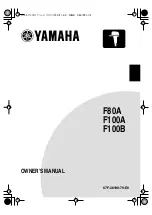
The logic state of all
microcontroller
digital
inputs may be changed
using
push buttons
.
Jumper
J17
is available
for selecting which logic
state will be applied to
corresponding MCU pin when button is pressed in any
I/O port group. If you, for example, place
J17
in
VCC
position, then pressing of any push button in I/O group
will apply logical one to the appropriate microcontroller
pin. The same goes for
GND
. If the jumper is taken
out, then all push buttons of the associated PORT will
be disconnected from the microcontroller pin. You can
disable pin protection 220ohm resistors by placing
jumper
J24
, which will connect your push buttons
directly to VCC or GND. Be aware that doing so you may
accidentally damage MCU in case of wrong usage.
Reset Button
In the far upper right section of the
board, there is a
RESET button
, which
can be used to manually reset the
microcontroller. This button is directly
connected to the
MCLR pin
.
Headers Buttons
LEDs
connectivity
Figure 10-5: IDC10 male headers enable easy
connection with mikroElektronika accessory boards
With enhanced connectivity as one of the key features of
EasyPIC v7, we have provided
four connection headers
for each PORT
. I/O PORT group contains two male IDC10
2x5 headers (like
CN10
and
CN15
on
Figure 10-4
). These
headers are all compatible with over 70 mikroElektronika
accessory boards, and enable simple connection. There is
one more IDC10 header
available on the left side of the
board, next to the section with displays.
I/O PORT group also contains 1x10 connection pad (like
CN25
on
Figure 10-4
) which can be used for connecting
mikroElektronika PROTO boards, or custom user boards.
LED (Light-Emitting
Diode)
is a highly
efficient electronic
light source. When
connecting LEDs, it is
neccessary to place
a current limiting
resistor in series
so that LEDs are
provided with the
current value specified by the manufacturer. A common
LED diode voltage is approximately 2.5V, while the
current varies from 0.2mA to 20mA, depending on
the type of the LED. The EasyPIC
™
v7 board uses
low-current LEDs with typical current consumption of
0.2mA or 0.3mA, depending
of VCC voltage selection.
Board contains 36 LEDs
which can be used for visual
indication of the logic state
on PORT pins. An active LED
indicates that a logic high
(1) is present on the pin. In
order to enable PORT LEDs,
it is necessary to enable the
corresponding DIP switches
on
SW3
(
Figure 10-7
).
Figure 10-7: SW3.1
through SW3.4
switches are used to
enable PORT LEDs
Microcontroller
page 23
Figure 10-6: Button press
level jumper (J17)
SMD resistor
limiting current
through the LED
NOTE: Because of it's orientation, header on the left side
of the board is not meant for placing accessory boards
directly. Instead, use wire jumpers or other ways to
establish connection and utilize these pins.














































